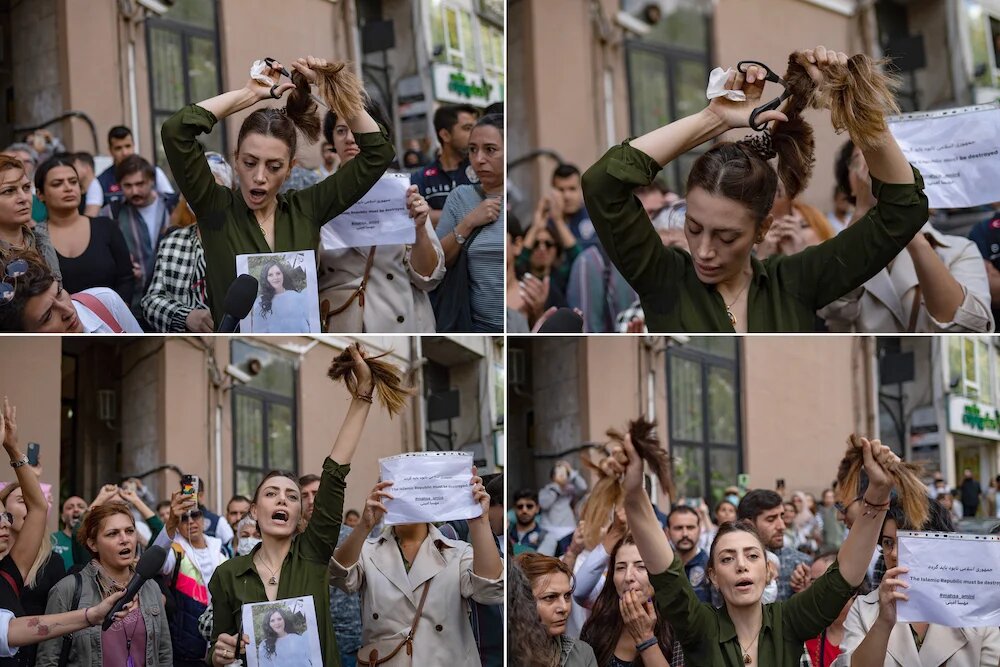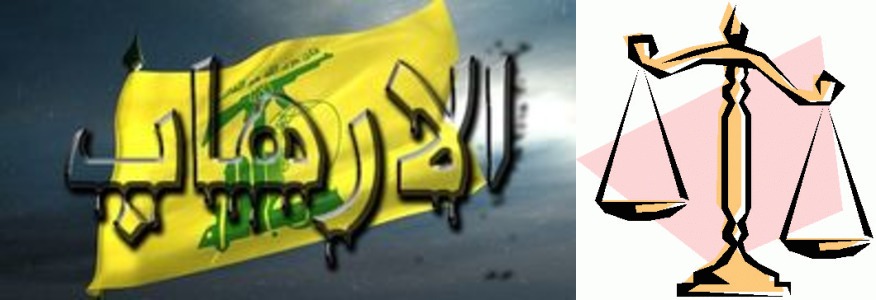النظام الإيراني يستهدف الاحتجاجات بتكتيكات المعلومات المضللة الراسخة
ألان حسانيان،معهد واشنطن/02 تشرين الثاني/2022
How Long-standing Iranian Disinformation Tactics Target Protests
Allan Hassaniyan/The Washington Institute/November 02/2022
After decades of global and domestic disinformation campaigns, the Iranian regime has only doubled down on media manipulation in response to recent protests.
This week, Tehran released its accusations against the two journalists– Niloofar Hamedi and Elaheh Mohammadi—who are being detained in Evin prison. The Iranian Ministry of Intelligence and intelligence wing of the IRGC issued a joint release accusing the two journalists of allowing the CIA to organize their reporting and “laying the groundwork for the intensification of external pressures.” The accusations themselves are absurd, but help to highlight the narratives Tehran consistently turns to in order to delegitimize and downplay dissent within the country.
The Islamic Republic of Iran (IRI) frequently represents itself as a major target and victim of political conspiracy and anti-Iran disinformation campaigns. However, these repeated claims and the contexts in which they are made serve to prove that Iran itself is a hub for fake news and disinformation, especially those targeting other states and its own society. Since its establishment in 1979, the IRI has consistently subjected its own people to media manipulation, and Iranian state media—including the Islamic Republic of Iran Broadcasting (IRIB) service, which essentially has a media monopoly—has functioned as a weapon of mass suppression of information.
Right now, both state media outlets in Iran and Persian diaspora platforms around the globe have been falsely representing the current mass protests in peripheral regions such as Kurdistan, Khuzestan, and Baluchistan as “separatist” in nature. This narrative has allowed the regime to discredit and divide the protestors and to justify its use of extreme violence in suppressing them.
As has been the case in the past, spreading such fake news about internal protests—and labeling them as “separatist activities”—represents an attempt by the regime to destroy any manifestations of nascent unity or solidarity among protestors and the Iranian public at large. Specifically in the central regions and provinces of Iran—populated mainly by the Persian Iranians—the regime hopes to sway public opinion with the argument that Iran’s territorial integrity is endangered.
In the absence of freedom of the press, critical assessments of the information distributed by state media are a difficult task. According to the 2022 World Press Freedom Index of Reporters Without Borders, Iran is among the world’s ten worst countries for press freedom and “one of the most repressive ones for journalists.” However, their most recent coverage of these mass protests against repression have made more obvious just how prevalent and insidious these narratives are.
A History of Disinformation
Iran’s disinformation strategy is as old as the regime itself. As an ideological apparatus of the regime, state media institutions like the IRIB have served to produce and impose the authority and values of the regime on the Iranian people. Decades of this propaganda has naturally raised the Iranian public’s antipathy toward the state’s all-encompassing strategy, with some Iranians viewing it as a “national shame.”
In the age of digital and social media, the creation of thousands of fake websites and fake Facebook, Instagram, and Twitter accounts is another tool with which the IRI has spread fake news and disinformation internationally—a tool which IRI officials openly admit and discuss using. For example, Ruhollah Momen Nasab—the former head of the Digital Media Centre within the IRI’s Ministry of Culture and Islamic Guidance, an outspoken opponent of free internet access and a staunch supporter of the restrictive “Law for the Protection of Cyberspace Users”—has proudly referred to Iran’s disinformation network as an element of psychological warfare. IRI officials have even boasted of the development of “cyber battalions” to manipulate the global narratives on Twitter and other platforms.
Regarding its domestic opponents, the IRI has conducted a similar campaign of psychological warfare. The IRIB, for example, takes advantage of a vast network of security, intelligence, military, and judicial organizations” to facilitate the “silencing, shaming, demonizing, vilifying, intimidating, punishing, and even torturing” of internal opponents, according to a report from the International Federation for Human Rights.
Indeed, the IRIB closely collaborates with the Ministry of Intelligence and the Islamic Revolutionary Guard Corps, broadcasting the likely coerced confessions of at least 355 people. While targets of the IRI’s disinformation are diverse, the main goal is to control public opinion—pitting groups against each other and tarnishing the reputations of activists and protesters.
The regime’s hate and disinformation campaigns especially villainize minority communities, including Iran’s Arabs, Azeris, Baha’i, Baluchis, Kurds, and Turkmens. In a recent example, four suspected members or sympathizers of Komala—a leftist Kurdish political party—were labelled in the media as Israel-affiliated terrorists in August despite little evidencel.
Over time, the regime’s targeting strategy has institutionalized chronic racism in the public and a phobia towards the democratic demands of non-Persian, non-Shia religious and ethnic groups. This phobia for non-Persian groups runs so deep, even anti-regime media outlets in the Persian diaspora tend to employ it, too, targeting Kurdish commentators and activists, for example, with unfounded questions about separatist agendas and outside influencers. Unfortunately, such disinformation campaigns and racist rhetoric have only worsened during the recent wave of protests across Iran.
Disinformation and Today’s Protests
By the second week of protests, it became clear that the regime was employing disinformation strategies online to try to manipulate the uprising into an armed revolt, a shift which would justify further violence by the IRI and cement regime support. Across social media, fake accounts and state-run outlets disseminated fake news and videos apparently showing Kurdish armed groups—namely the Peshmerga—among protesters. Other videos explicitly showed Iranian security forces dressed as Peshmerga and harassing the locals in Kurdish cities. And despite the regime’s decades-long campaign to destroy traces of Kurdish resistance and militarize the Kurdistan province, the regime has now actually attempted to force the real Kurdish Peshmerga from their remote bases in Iraqi Kurdistan to urban areas in order to join the protests, giving the impression that protestors have turned to violence and that the regime must respond with full, brutal force.
While disinformation runs rampant, accurate reporting of the protests and the regime’s violent crackdown has been hard to come by, especially with the IRI widely disrupting internet access across the country only one week in and due to its systemic targeting of independent journalists reporting on the protests. These massive internet blackouts have prevented protestors from voicing their dissent, coordinating their activities, or sharing their experiences at the hands of the IRGC and other regime forces.
Although the death of Jina “Mahsa” Amini on September 16 initially sparked a sense of solidarity among the Iranian people against the regime, the IRI has only ramped up its disinformation and fake news strategies in response, directly challenging the public’s solidarity. If the regime continues to successfully label the uprisings as a separatist revolt, preying on the already-fragile tensions between Persian and non-Persian communities while suppressing any real information in public discourse, the unprecedented unity observed during this wave of protests will be put to the ultimate test. In the days and weeks ahead, the Iranian people must prove that their unity is enduring, not temporary.
*Allan Hassaniyan is a lecturer in Middle East Studies at the Institute of Arab and Islamic Studies (IAIS), at the University of Exeter. Key areas of study for Hassaniyan include the history of the Ottoman Empire, state and society in the Middle East, Iran since the 16th Century, history and politics in Kurdistan, and Iraq.
النظام الإيراني يستهدف الاحتجاجات بتكتيكات المعلومات المضللة الراسخة
ألان حسانيان،/معهد واشنطن/02 تشرين الثاني/2022
ردًا على موجة الاحتجاجات الأخيرة، وبعد عقود من حملات التضليل العالمية والمحلية، عمل النظام الإيراني على مضاعفة تلاعبه بوسائل الإعلام.
نشرت طهران هذا الأسبوع لائحة الاتهامات الموجهة ضد الصحفيتين نيلوفر حميدي وإله محمدي المحتجزتين في سجن إيفين، حيث أصدرت وزارة الاستخبارات والأمن الوطني الايرانية، وجهاز الاستخبارات التابع للحرس الثوري الإيراني بيانًا مشتركًا اتهم الصحفيتين بالتخابر مع وكالة الاستخبارات المركزية الأمريكية، والعمل على “تمهيد الطريق لتكثيف الضغوط الخارجية”. ورغم سخافة تلك الاتهامات، الا أنها ستساعد في تسليط الضوء على الروايات التي تلجأ إليها طهران باستمرار لنزع الشرعية عن المعارضة والتقليل من أهميتها داخل البلاد.
تصوّر جمهورية إيران الإسلامية نفسها على أنها الهدف والضحية الرئيسية لمؤامرة سياسية وحملات معلومات مضللة معادية لها. ومع ذلك، فإن هذه الادعاءات المتكررة والسياقات التي قُدمت من خلالها، تُثبت أنها بحدّ ذاتها مركز للأخبار المزيفة والمعلومات المضللة التي تستهدف دولًا أخرى وحتى المجتمع الإيراني. ولم تتوان الجمهورية الإسلامية منذ تأسيسها عام 1979 عن التلاعب بشعبها من خلال الإعلام، وقد كانت وسائل الإعلام الحكومية، بما فيها خدمة “إذاعة جمهورية إيران الإسلامية” التي تحتكر الإعلام أساسًا، أشبه بسلاح طمس شامل للمعلومات.
في الوقت الراهن، تنقل وسائل الإعلام الحكومية في إيران ومنصات الشتات الفارسي حول العالم بشكل مزيف الاحتجاجات الشعبية في المناطق الطرفية مثل كردستان وخوزستان وبلوشستان على أنها ذات طبيعة “انفصالية”. وقد سمحت هذه السردية للنظام بتشويه صورة المحتجين وإحداث شرخ بينهم وبتبرير استخدامه للعنف الشديد في قمعهم.
وكما حصل في الماضي، يشكل نشر الأخبار المزيّفة بشأن الاحتجاجات الداخلية، ووصفها بأنها “أنشطة انفصالية”، محاولة من قبل النظام للقضاء على أي مظاهر للوحدة أو التضامن الناشئ بين المحتجين خصوصًا والشعب الإيراني عمومًا. ويأمل النظام أن يغير الرأي العام متذرعًا بحجة أن سلامة أراضي إيران بخطر، ولا سيما في مناطق ومحافظات إيران الوسطية التي يقطنها الإيرانيون الفارسيون بشكل رئيسي.
وفي ظل غياب حرية الصحافة، يبقى إخضاع المعلومات التي تنشرها وسائل الإعلام الحكومية لتقييمات دقيقة مهمة صعبة. وبحسب مؤشر حرية الصحافة العالمي لعام 2022 الصادر عن منظمة “مراسلون بلا حدود”، تندرج إيران ضمن أسوأ 10 دول على صعيد حرية الصحافة، كما أنها “إحدى أكثر الدول قمعًا للصحافيين”. غير أن تغطيتها في الآونة الأخيرة للاحتجاجات الشعبية ضد القمع أثبتت مدى شيوع وخداع هذه السرديات.
تاريخ حافل بالمعلومات المضللة
يبدو أن استراتيجية المعلومات المضللة التي تنتهجها إيران قديمة ومن عمر النظام نفسه. فقد عملت المؤسسات الإعلامية الحكومية مثل “إذاعة جمهورية إيران الإسلامية”، بصفتها أجهزة أيديولوجية تابعة للنظام، على إنتاج سلطة وقيم النظام وفرضها على الشعب الإيراني. وبطبيعة الحال، أججت عقود من هذه الحملة الدعائية كراهية الشعب لاستراتيجية الدولة الشاملة التي يصفها البعض بأنها “عار على الوطن”.
وفي عصر الإعلام الرقمي ووسائل التواصل الاجتماعي، يشكل إنشاء آلاف المواقع الإلكترونية المزيفة والحسابات المزيفة على موقع “فيسبوك” و”إنستغرام” و”تويتر” أداة استخدمتها الجمهورية الإسلامية لنشر الأخبار المزيفة والمعلومات المضللة على الصعيد الدولي، وهي أداة يقر المسؤولون الإيرانيون باستخدامها ويتحدثون عنها علنًا. على سبيل المثال، أشار روح الله مومن نسب، الرئيس السابق لـ “مركز الإعلام الرقمي” التابع لوزارة الثقافة والإرشاد الإسلامي الذي يعارض بشدة النفاذ الحر إلى الإنترنت ويدعم بقوة “قانون حماية مستخدمي الفضاء السيبراني”، بفخر إلى شبكة المعلومات المضللة التي تستخدمها إيران كأحد أسلحة الحرب النفسية. كما أن المسؤولين في الجمهورية الإسلامية تباهوا بإنشاء “فرق سيبرانية” للتلاعب بالسرديات العالمية على “تويتر” ومنصات أخرى.
هذا وشنّت الجمهورية الإسلامية حربًا نفسية مماثلة أيضًا على معارضيها المحليين. فعلى سبيل المثال، تستغل “إذاعة جمهورية إيران الإسلامية” شبكة واسعة من المنظمات الأمنية والاستخباراتية والعسكرية والقضائية لتسهيل “إسكات وتعيير وتشويه سمعة وذم وترهيب ومعاقبة” المعارضين الداخليين وحتى تعذيبهم، وفق تقرير صدر عن “الفدرالية الدولية لحقوق الإنسان”.
وبالفعل، تتعاون “إذاعة جمهورية إيران الإسلامية” مع وزارة الاستخبارات و”حرس الثورة الإسلامية الإيرانية”، وقد نشرت اعترافات قسرية على الأرجح لـ355 شخصًا على الأقل. وفي حين تتنوع أهداف المعلومات المضللة التي تنشرها الجمهورية الإسلامية، يبقى الهدف الرئيسي التحكم بالرأي العام، وتحريض الجماعات على بعضها وتلطيخ سمعة الناشطين والمحتجين.
فحملات النظام القائمة على الكراهية والمعلومات المضللة تحرص على تشويه صورة مجتمعات الأقليات، بما فيها العرب والأذريين والبهائيين والبلوش والأكراد والتركمان في إيران. وفي حادثة وقعت مؤخرًا، وصفت وسائل الإعلام أربعة عناصر يشتبه بانتمائهم أو تأييدهم للحزب السياسي الكردي اليساري “كومله” بأنهم إرهابيون تابعون لإسرائيل في آب/أغسطس على الرغم من عدم وجود أدلة كافية.
ومع مرور الوقت، رسخت استراتيجية الاستهداف التي ينتهجها النظام عنصرية مزمنة في المجتمع ورهابًا من مطالبة الجماعات الدينية والعرقية غير الفارسية وغير الشيعية بالديمقراطية. ويبدو أن هذا الرهاب من الجماعات غير الفارسية راسخ بشكل عميق، حتى أن وسائل الإعلام المعادية للنظام في الشتات الفارسي تميل إلى استخدامه بحيث تحرج المعلقين والناشطين الأكراد، على سبيل المثال، بأسئلة لا أساس لها عن أجندات الانفصاليين والمؤثرين الخارجيين. ولسوء الحظ، لم تنفك حملات المعلومات المضللة والخطابات العنصرية تزداد سوءًا خلال موجات الاحتجاجات الأخيرة التي عمّت إيران.
المعلومات المضللة والاحتجاجات الحالية في إيران
بحلول الأسبوع الثاني من الاحتجاجات، اتضح أن النظام كان يطبق استراتيجيات المعلومات المضللة عبر الإنترنت لمحاولة تحويل الانتفاضة إلى ثورة مسلحة، وهو تغيير كان ليبرر زيادة وتيرة العنف الذي يمارسه النظام ويؤمّن له الدعم. فقد نشرت وسائل التواصل الاجتماعي وحسابات مزيفة ووسائل إعلامية حكومية أخبارًا وفيديوهات مضللة أظهرت على ما يبدو جماعات مسلحة كردية، ولا سيما “قوات البيشمركة”، بين المحتجين. كما عرضت فيديوهات أخرى تظهر صراحة قوات أمن إيرانية ترتدي البزة العسكرية الخاصة بـ “قوات البيشمركة” وتضايق سكان مدن كردية. وعلى الرغم من الحملة التي بدأها النظام منذ عقود لتدمير آثار المقاومة الكردية وإضفاء الطابع العسكري على محافظة كردستان، حاول النظام بالفعل إرغام “قوات البيشمركة” الكردية الحقيقية على الانتقال من قواعدها البعيدة في كردستان العراق إلى مناطق حضرية بهدف الانضمام إلى المحتجين، ما يترك انطباعًا بأن المحتجين يستخدمون العنف وأنه على النظام أن يرد بكاملة قوته وبوحشية.
وفي حين تنتشر المعلومات المضللة على نطاق واسع، أصبح من الصعب إيجاد تقارير دقيقة عن الاحتجاجات وحملة القمع العنيفة التي يمارسها النظام، ولا سيما في ظل عرقلة إيران النفاذ إلى الإنترنت في أرجاء البلاد منذ الأسبوع الأول، واستهدافها المنهجي للصحفيين المستقلين الذين يغطون الاحتجاجات. وقد منع الانقطاع المتكرر للإنترنت المحتجين من إيصال وجهة نظرهم وتنسيق أنشطتهم ومشاركة تجاربهم مع الحرس الثوري وقوات النظام الأخرى.
وعلى الرغم من أن مقتل جينا “مهسا ” أميني في 16 أيلول/سبتمبر أطلق موجة تضامن في أوساط الشعب الإيراني ضد النظام، عززت الجمهورية الإسلامية استراتيجيات المعلومات المضللة والأخبار المزيفة التي تطبقها ردًا على ذلك، في تحد مباشر لتضامن الشعب. وفي حال واصل النظام بنجاح وصف الانتفاضات بأنها ثورة انفصالية، مستغلًا حالة التوترات الدقيقة أساسًا بين المجتمعات الفارسية وغير الفارسية في ظل منع تداول أي معلومات حقيقية في الخطاب العام، ستخضع وحدة الشعب غير المسبوقة خلال موجة الاحتجاجات هذه للاختبار الأصعب. فخلال الأيام والأسابيع المقبلة، على الشعب الإيراني أن يثبت أن وحدته دائمة وليست مؤقتة.
***ألان حسانيان، هو محاضر متخصص في دراسات الشرق الأوسط في معهد الدراسات العربية والإسلامية بجامعة إكستر. تشمل دراسات حسانيان الرئيسية تاريخ الإمبراطورية العثمانية، والدولة والمجتمع في الشرق الأوسط، وإيران منذ القرن السادس عشر، والتاريخ والسياسة في كردستان، والعراق.
https://www.washingtoninstitute.org/ar/policy-analysis/alnzam-alayrany-ysthdf-alahtjajat-btktykat-almlwmat-almdllt-alraskht






















